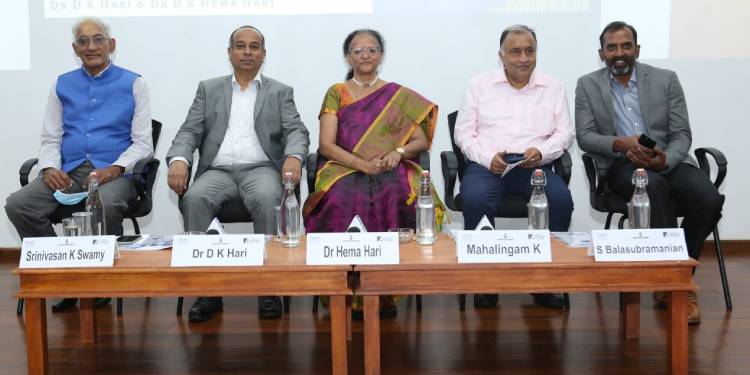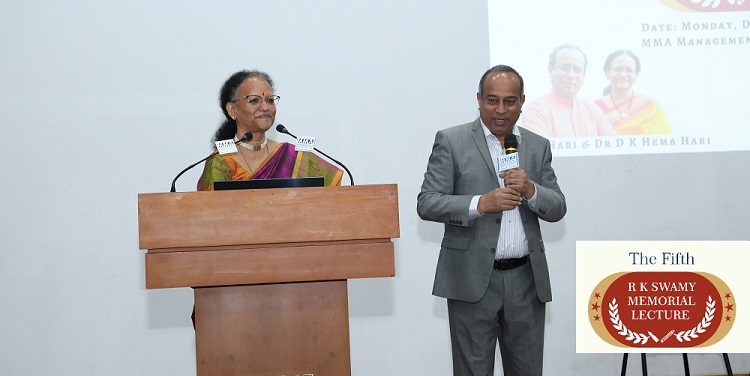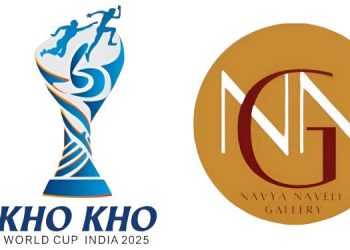“How do we know about our heritage, our past? From what they (our ancestors) have left behind. Very sadly, we haven’t been able to understand some of the things we see. But now, we have had some breakthroughs,” said Dr Hema Hari, opening the RK Swamy Memorial Lecture in Chennai on 11 December 2023 with partner Dr DK Hari of Bharath Gyan.
Bharath Gyan defines itself as an initiative on Indian Civilization Knowledge Studies. Its stated mission is to raise awareness among common people about the knowledge, practices and global connects of the Indian civilisation over millennia, from an Indic perspective.
The couple referred to sign boards with similar symbols from 5,000 years ago, found all the way from Tahiti to Phoenicia in the Mediterranean. “We find such signs all across this region. Interestingly, these are also places where you find a lot of influence of the Indian civilisation,” Hema added.
Hari pointed to the spread of communication as early as 4,000 to 5,000 years ago across seas. “Today we find it difficult to communicate across two states,” noted Hari, as the presenters displayed the similarities between the Tahiti and Harappan scripts.
On the other end of the world, erstwhile Phoenicia, which is today spread out as several East Mediterranean countries, is supposed to have been the source for the Western alphabets, noted Hema.
The Western alphabets including English do not yield a scientific explanation for the sequence of the alphabets, contended the speakers. On the other hand, they reasoned that all Indian languages, organised as vowels and consonants, allow for a scientific explanation stemming from Indic ancestors’ understanding of the buccal cavity. Researchers are now able to conclude that it was the Indian civilisation alphabets that travelled to Phoenicia – and resulted in the order of Western alphabets that we see today with a few swaps, they said, quoting research by Wim J Borsboom.
From Sounds to Music
“Music is very natural. Everybody can sing, everybody can make melodious sounds. The science comes when you want to translate that sound into a written form. A form that can help reproduce the melody that was originally produced,” said Hema, as the presenters underlined another aspect of Indian civilisation that they claim had influenced the West.
Singing them out, she established the similarities between the Indian and Western notes of music, Sa-Re-Ga… and Do-Re-Mi.
“Why are they so similar? Who got it from where? Who has got the logical answer?” posed Hari, pointing to the origins.
His partner chimed in saying that we are able to explain the notes in India, lending credence to the argument that they originated here. Ancient texts offer a very clear explanation to the Indian musical notations, she said. And the notations are rooted in science, underlined the presenters.
“How did the Western notes come about? While we are able to show, with logic, nature and science, as to how these notes came about, if you ask the same about the western notes, they will trace it to the chant of Hymn to St. John. This holds good even for the Japanese – they also trace it to the starting letters of certain hymns,” explained Hema.
How Did We Communicate With The World?
“They didn’t know where the land was nor did they know the people, but they went to lands across the seas 4,000 years back and traded there successfully. How did they manage to communicate?” observed Hari. It was through symbols and signs, the duo offered.
“We had definite ‘Aksharams’ (letters) with which we wrote our literature. And we also had the symbols and signs for trade. The ‘Aksharams’ were for people from within who knew that particular language and could write that particular script. When we had to transcend boundaries, we started using symbols and signs,” she noted.
Different symbols were used for different products that were traded – like cuts to symbolise knives, which was one of the major items India of then traded in, observed the speakers.
“That’s what helped us transcend time, geographies and civilisations,” noted Hema.
She added that India is at a great advantage because of its heritage because it has dealt with the science of sounds (like Om), hand signs (mudra), face signs (karana), music (navarasa), words (vak).
“From all this what we find is that we have addressed the different layers in communication. We have had a good handle because we approached it all the way from Om, which is the subtle, to the written scripts and alphabets,” added Hema.
Hari noted, “Today people talk about ‘Mindfulness’ and all that. Which civilisation can talk about the ‘mind’ except ours? We have been talking about it for the last 5.000 years and consistently documenting it.”

The Traders’ Path
The speakers cited British historian Angus Maddison on India’s share of the world income, that was as high as a third for centuries – it was 32 pc of the world’s GDP in 1 CE (Contours of the World Economy 1 – 2030 AD: Essays in Macro-Economic History, Oxford University Press, 2007).
For one to have reached a third of world’s trade, it needed to have had substantial trade leading up to that point, contended the speakers. It must have been built over millennia, they underlined.
Communication is but one aspect, even if a critical cog, while accounting and sea and land transport were other elements that one must have had proficiency in, for a flourishing trade, Hari emphasised.
Contrary to popular perception, Indian exports were not dependent on spices. The top export categories were metals, cotton and silk, navigation, dyes, sugar, spices and diamonds back then. India built ships and used them to transport products using them, but also built and exported ships, noted the speakers.
These traders had been labelled ‘Shreshta’ or (noble) in the ancient texts, they said, underlining the disparity in the definition and approaches to business. While in the West we hear ‘Buyer Beware’, in India it is about ‘Shubh Labh’, noted Hari.
Know It, Own It, Expound It
Hema noted that their talk at the Madras Management Association had covered aspects like commerce, management and trade, among things that were ingraned in Indian heritage. She added that besides other essential aspects like transportation and accounting, also important were the subtler aspects like communication and the thought that accompanies it.
“You have to first know what your heritage is. Then you have to own it – stake claim to it. And then, we have to expound it,” she surmised.

















